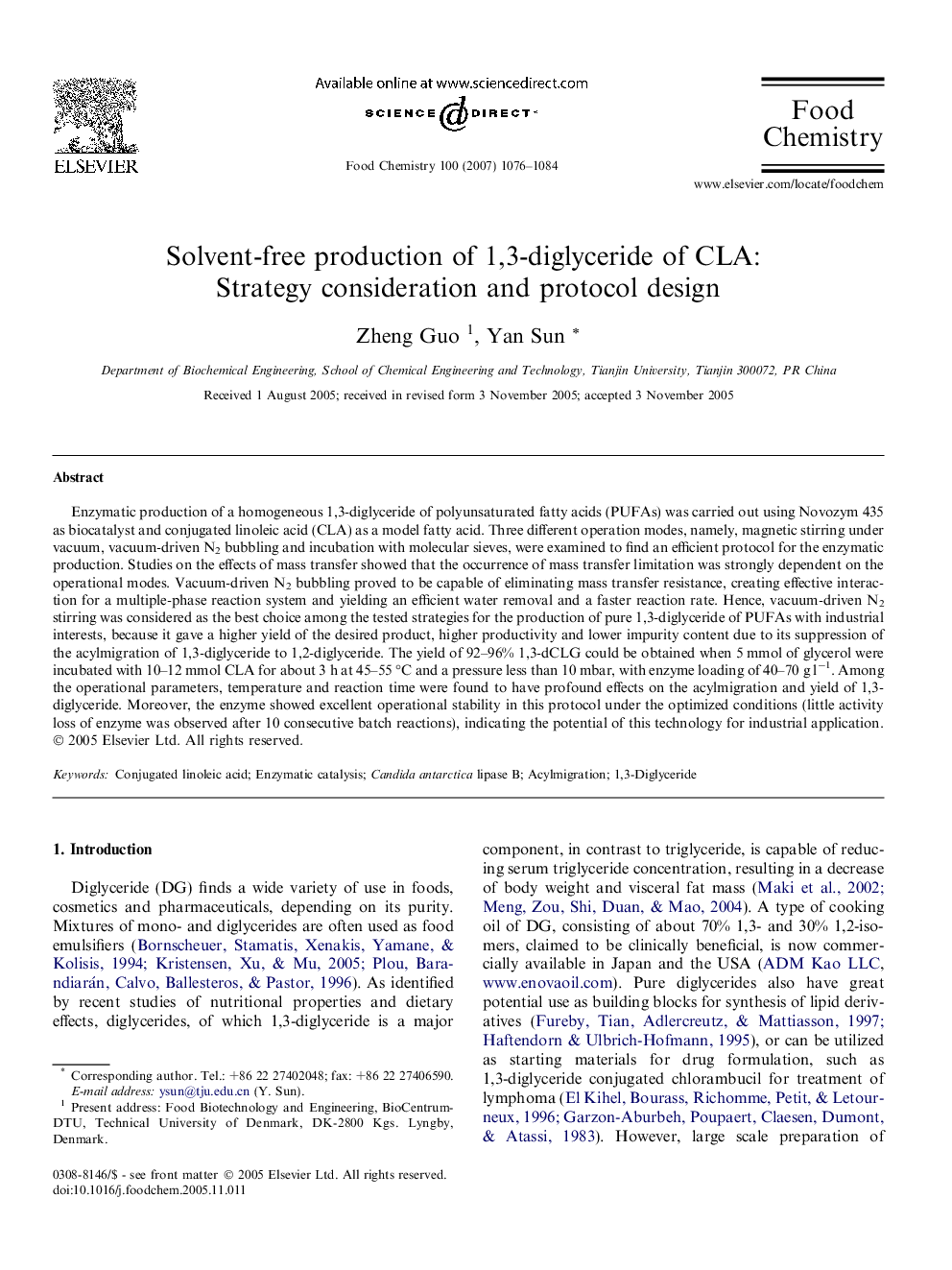| کد مقاله | کد نشریه | سال انتشار | مقاله انگلیسی | نسخه تمام متن |
|---|---|---|---|---|
| 1190893 | 963542 | 2007 | 9 صفحه PDF | دانلود رایگان |

Enzymatic production of a homogeneous 1,3-diglyceride of polyunsaturated fatty acids (PUFAs) was carried out using Novozym 435 as biocatalyst and conjugated linoleic acid (CLA) as a model fatty acid. Three different operation modes, namely, magnetic stirring under vacuum, vacuum-driven N2 bubbling and incubation with molecular sieves, were examined to find an efficient protocol for the enzymatic production. Studies on the effects of mass transfer showed that the occurrence of mass transfer limitation was strongly dependent on the operational modes. Vacuum-driven N2 bubbling proved to be capable of eliminating mass transfer resistance, creating effective interaction for a multiple-phase reaction system and yielding an efficient water removal and a faster reaction rate. Hence, vacuum-driven N2 stirring was considered as the best choice among the tested strategies for the production of pure 1,3-diglyceride of PUFAs with industrial interests, because it gave a higher yield of the desired product, higher productivity and lower impurity content due to its suppression of the acylmigration of 1,3-diglyceride to 1,2-diglyceride. The yield of 92–96% 1,3-dCLG could be obtained when 5 mmol of glycerol were incubated with 10–12 mmol CLA for about 3 h at 45–55 °C and a pressure less than 10 mbar, with enzyme loading of 40–70 g l−1. Among the operational parameters, temperature and reaction time were found to have profound effects on the acylmigration and yield of 1,3-diglyceride. Moreover, the enzyme showed excellent operational stability in this protocol under the optimized conditions (little activity loss of enzyme was observed after 10 consecutive batch reactions), indicating the potential of this technology for industrial application.
Journal: Food Chemistry - Volume 100, Issue 3, 2007, Pages 1076–1084